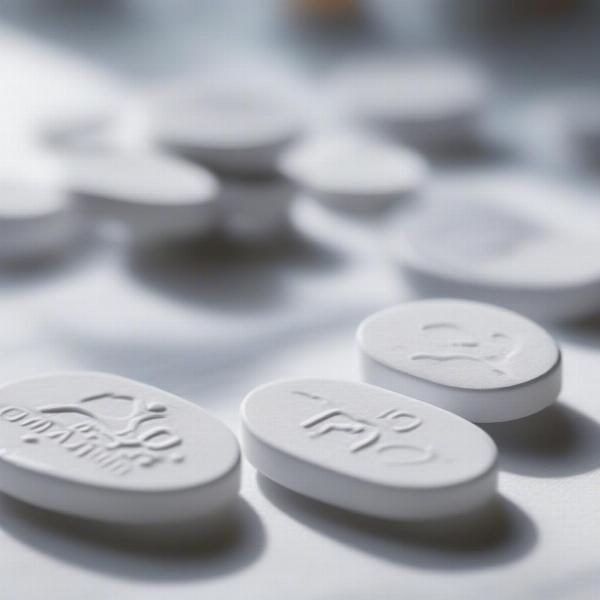Bactrim, also known as sulfamethoxazole-trimethoprim, is a commonly prescribed antibiotic for dogs. Understanding the correct Bactrim 800 160 dosage for dogs is crucial for effective treatment and to avoid potential side effects. This article will provide a detailed guide to Bactrim dosage, uses, side effects, and important considerations for dog owners.
Understanding Bactrim and Its Uses in Dogs
Bactrim is effective against a wide range of bacterial infections, including skin infections, urinary tract infections (UTIs), respiratory infections, and ear infections. It works by inhibiting the growth of bacteria, allowing the dog’s immune system to eliminate the infection. Vets often prescribe Bactrim for infections resistant to other antibiotics, making it a valuable tool in veterinary medicine.
 Bactrim tablets for dogs
Bactrim tablets for dogs
Bactrim 800 160 Dosage for Dogs: What You Need to Know
While “Bactrim 800 160” refers to a specific strength of the medication (800mg sulfamethoxazole and 160mg trimethoprim), the actual dosage for your dog will depend on several factors, including their weight, the type of infection, and their overall health. Never administer Bactrim to your dog without a veterinarian’s prescription and specific dosage instructions. Administering the wrong dosage can be ineffective or even harmful. A typical dosage range is 15-30 mg/kg of body weight, divided into two doses per day. However, this is a general guideline, and your vet may adjust the dosage based on your dog’s specific needs.
Potential Side Effects of Bactrim in Dogs
While Bactrim is generally safe for dogs, some potential side effects can occur. These include:
- Loss of appetite
- Vomiting
- Diarrhea
- Lethargy
- Skin rashes
- Increased thirst and urination
If you notice any of these side effects in your dog, contact your veterinarian immediately. In rare cases, more serious side effects like liver damage or blood disorders can occur.
Important Considerations When Using Bactrim for Dogs
- Allergic Reactions: Some dogs are allergic to sulfa drugs. If your dog has a known sulfa allergy, inform your veterinarian.
- Pre-existing Conditions: If your dog has kidney or liver disease, your veterinarian may need to adjust the dosage or monitor them closely during treatment.
- Drug Interactions: Bactrim can interact with certain medications, such as warfarin and phenytoin. Inform your vet about all other medications your dog is currently taking.
- Probiotics: Giving your dog probiotics during Bactrim treatment can help prevent digestive upset, a common side effect.
Frequently Asked Questions (FAQ)
- What should I do if I miss a dose of Bactrim for my dog? Give the missed dose as soon as you remember. If it’s close to the next scheduled dose, skip the missed dose and continue with the regular schedule.
- Can I give my dog human Bactrim? No, never give your dog human medication without consulting a veterinarian. Human formulations may contain different ingredients or dosages that are unsafe for dogs.
- How long does it take for Bactrim to work in dogs? You should start to see improvement in your dog’s condition within a few days of starting treatment. However, it’s crucial to complete the entire course of antibiotics prescribed by your vet, even if your dog seems better.
Related Articles
(If applicable, include links to relevant articles on your website here.)
About ILM Dog
ILM Dog is your trusted source for comprehensive and practical advice on all aspects of dog care, from breed selection and puppy care to senior dog health and training. We provide expert guidance on nutrition, grooming, health, and behavior, empowering dog owners worldwide to provide the best possible care for their furry companions. For expert advice tailored to your dog’s specific needs, contact us at [email protected] or call us at +44 20-3965-8624. Visit ILM Dog for more valuable resources and information.